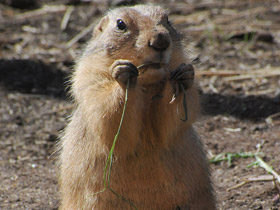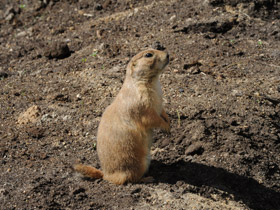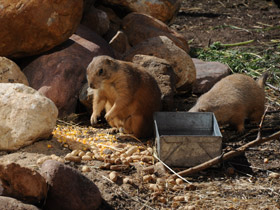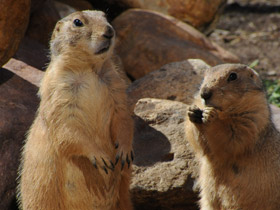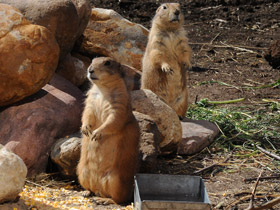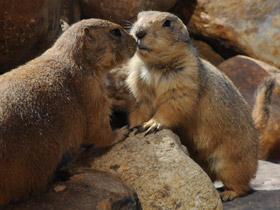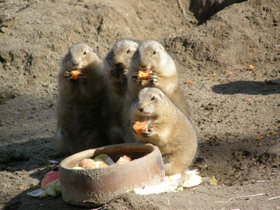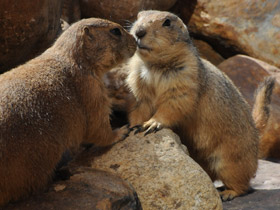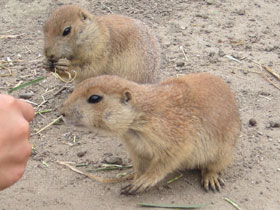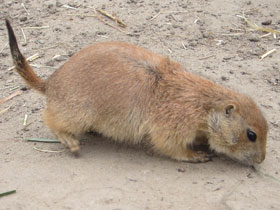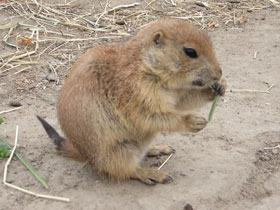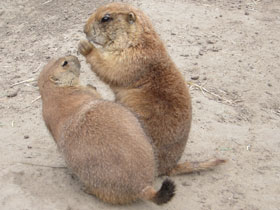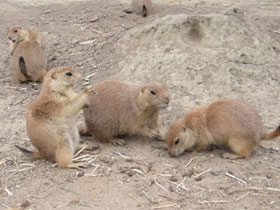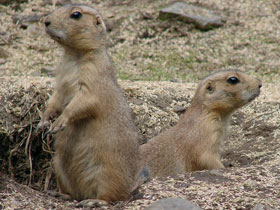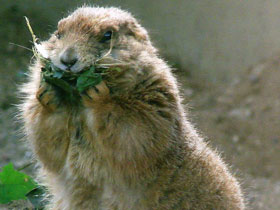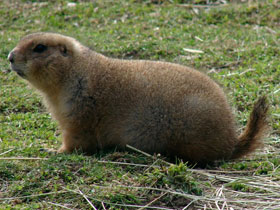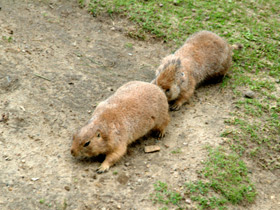The prairie dogs (genus Cynomys)
Prairie dogs видео
Prairie dogs (genus Cynomys) are herbivorous burrowing ground squirrels native to the grasslands of North America. Within the genus are five species: black-tailed, white-tailed, Gunnison's, Utah, and Mexican prairie dogs. In Mexico, prairie dogs are found primarily in the northern states, which lie at the southern end of the Great Plains: northeastern Sonora, north and northeastern Chihuahua, northern Coahuila, northern Nuevo León, and northern Tamaulipas. In the United States, they range primarily to the west of the Mississippi River, though they have also been introduced in a few eastern locales. They are also found in the Canadian Prairies. Despite the name, they are not actually canines; prairie dogs, along with the marmots, chipmunks, and several other basal genera belong to the ground squirrels (tribe Marmotini), part of the larger squirrel family (Sciuridae).
Habitat and distinctive features
Prairie dogs have a massive body with short legs, a rounded head with small ears and large black eyes, and a short tail. Prairie dogs have a body length of 30-35 cm and weigh between 800 and 1,400 g. These charming animals are inhabitants of the North American prairies. They got their name from Canadian fur hunters because of their sharp barking sounds, by which "sentinel" dogs usually inform their tribesmen about the approach of strangers.
Social behaviour and reproduction
Prairie dogs live in large communities and therefore have a well-developed communication system. These rodents build their burrows in such a way that they form entire "cities", uniting numerous families into "neighbourhoods". One family lives in a "neighbourhood", usually consisting of 20 individuals: a dominant male, subordinate males, females with cubs. Reproduction takes place from February to March, pregnancy lasts 34-37 days. The litter usually contains 1 to 6 naked blind cubs, which emerge from the burrow after 5-6 weeks. Young meadow dogs reach sexual maturity at 2 years of age, and they live from 5 to 8 years.
Classification and first identification
The black-tailed prairie dog (Cynomys ludovicianus) was first described by Lewis and Clark in 1804. Lewis described it in more detail in 1806, calling it the "barking squirrel".
Order Rodentia:
- Suborder Sciuromorpha:
- Family Sciuridae (squirrels, chipmunks, marmots, and prairie dogs):
- Subfamily Xerinae:
- Genus Cynomys:
- Gunnison's prairie dog, Cynomys gunnisoni;
- White-tailed prairie dog, Cynomys leucurus;
- Black-tailed prairie dog, Cynomys ludovicianus;
- Mexican prairie dog, Cynomys mexicanus;
- Utah prairie dog, Cynomys parvidens;
- About 14 other genera in subfamily.
Typology
Five species of the biological genus of prairie dogs are known:
- The black-tailed (Cynomys ludovicianus), which inhabits a territory from Saskatchewan through central USA to Chihuahua.
- The Mexican (Cynomys mexicanus), from Nuevo León, Coahuila, San Luis Potosí, Sonora and Zacatecas.
- White-tailed (Cynomys leucurus), Wyoming, Colorado.
- Gunnison's (Cynomys gunnisoni), Utah, Colorado, Arizona, New Mexico.
- Utah's (Cynomys parvidens), Utah.
The first of these classes are summarised in the subgenus Cynomys, the last three in the subgenus Leucocrossuromys.

















